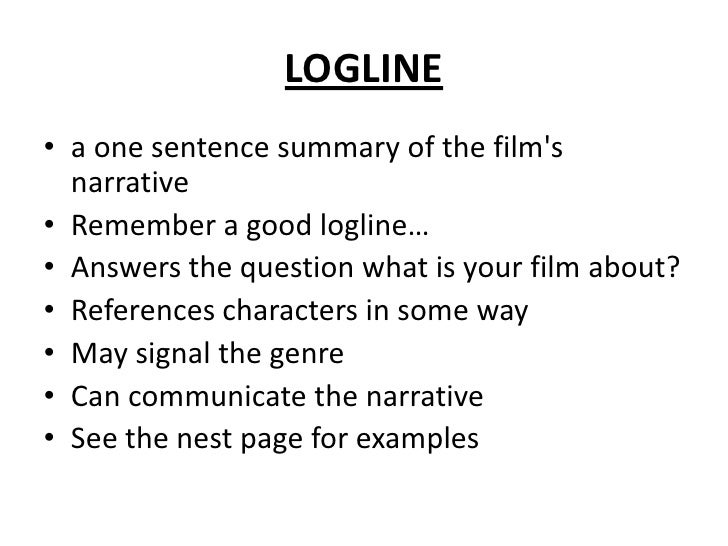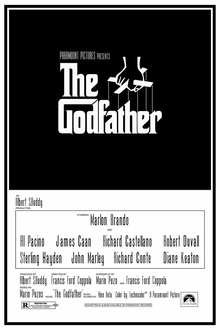

And-bonus-it gets the title in the logline (which is rare). Adding the word “fugitive” tells us he’s on the loose, and helps describe our WHO (because escaping after the conviction must have required some ingenuity). Notice that what we dropped “escapes custody and”-which is not WHO, GOAL, or OBSTACLE. Still, it could be better:Ī fugitive doctor wrongly convicted of killing his wife struggles to prove his innocence while pursued by a relentless U.S. WHO: A doctor wrongly convicted of killing his wife. This, of course, is The Fugitive-in 24 words. Your story, reduced to its most basic elements: character (WHO) and conflict (which results from the character’s efforts to overcome the OBSTACLE and reach their GOAL).Ī doctor wrongly convicted of killing his wife escapes custody and struggles to prove his innocence while being pursued by a relentless U.S. No long-winded explanations, no secondary characters, no subplots, no character names (which would mean nothing at this point, unless they’re historical or otherwise-recognizable figures-in which case, go ahead and plug those names in). To be effective, the logline must convey three things: WHO the story is about, what they want (their GOAL), and what stands in their way (the OBSTACLE). The logline has but a single purpose: to convey the most essential elements of your story’s CONCEPT concisely, imaginatively, and smoothly. It’s also expected-so you don’t really have the option to ignore this. A bad logline, on the other hand, will make you and your tale less welcome than a circus clown at a graveside eulogy.Ī great logline can get a terrible story read (or partially read), and a terrible (or average) logline can get the best story in the world round-filed before a single page has been turned. It will keep you focused as you write (or revise) your story, and it will persuade complete strangers-agents, managers, acquisition editors and production executives-–to read your book, screenplay, or whatever it is you’ve got.

This is where the logline comes into play.Īnd so it follows that few things are more useful than a good logline.

And, finally, they have to market the stories they buy to a public besieged by the marketing machines of a thousand competitors. Once they have read the stories they’ve decided (based on those loglines and the pitches that came with them) to read, they need a way to get stories across to other busy people-quickly. These people are never going to read everything. If we’re talking average-length novels, the figure is more like 3,000 loglines. The brutal logic of the situation is this: an agent or producer can read 1,000 loglines in the time it takes to read a single screenplay. They need a way to decide which stories are worth a closer look, and which are not-without actually taking the time to read those stories. First and foremost, the people who represent and purchase books and screenplays are incredibly busy.

Now let’s deal with New York and Hollywood. You have one sentence-because if they don’t like that, they’ll never get to your pitch. You do not, at this point, have the pitch or the whole back cover to make your case. If you don’t hook them fast-intrigue them with your concept-they’re gone, and onto the next thing. They’ve got a bazillion titles to choose from. They’re scanning the bookshelves (real or virtual) deciding on their next read. Let’s start with your average book reader, because that’s a simpler equation. Because if you blow the answer to that question, nothing else matters: few if any industry professionals (in Hollywood or New York) will read your story, and there’s a good chance no one else will, either. Did you explain who your main character is, what he or she wants, and what keeps them from getting whatever-it-is they want? If not, you need a logline. Did your answer require more than 10 seconds? Did you hesitate or fumble? If so, you need a logline. (For a more accurate evaluation, have someone else ask the question and time your answer.) And here…we…go. Do not hit STOP until you’ve answered the question-out loud-to the best of your ability. Either way, hit START the second you’ve finished reading the question below. If you don’t have a “real” one handy, bring up a virtual stopwatch. And they will pre-judge your tale not on its merits, but on the answer you provide.īefore we get to the question itself, find a stopwatch. To find out, they will ask you a simple question. When you’re selling a story (or trying to), there’s one thing everyone wants to know.


 0 kommentar(er)
0 kommentar(er)
